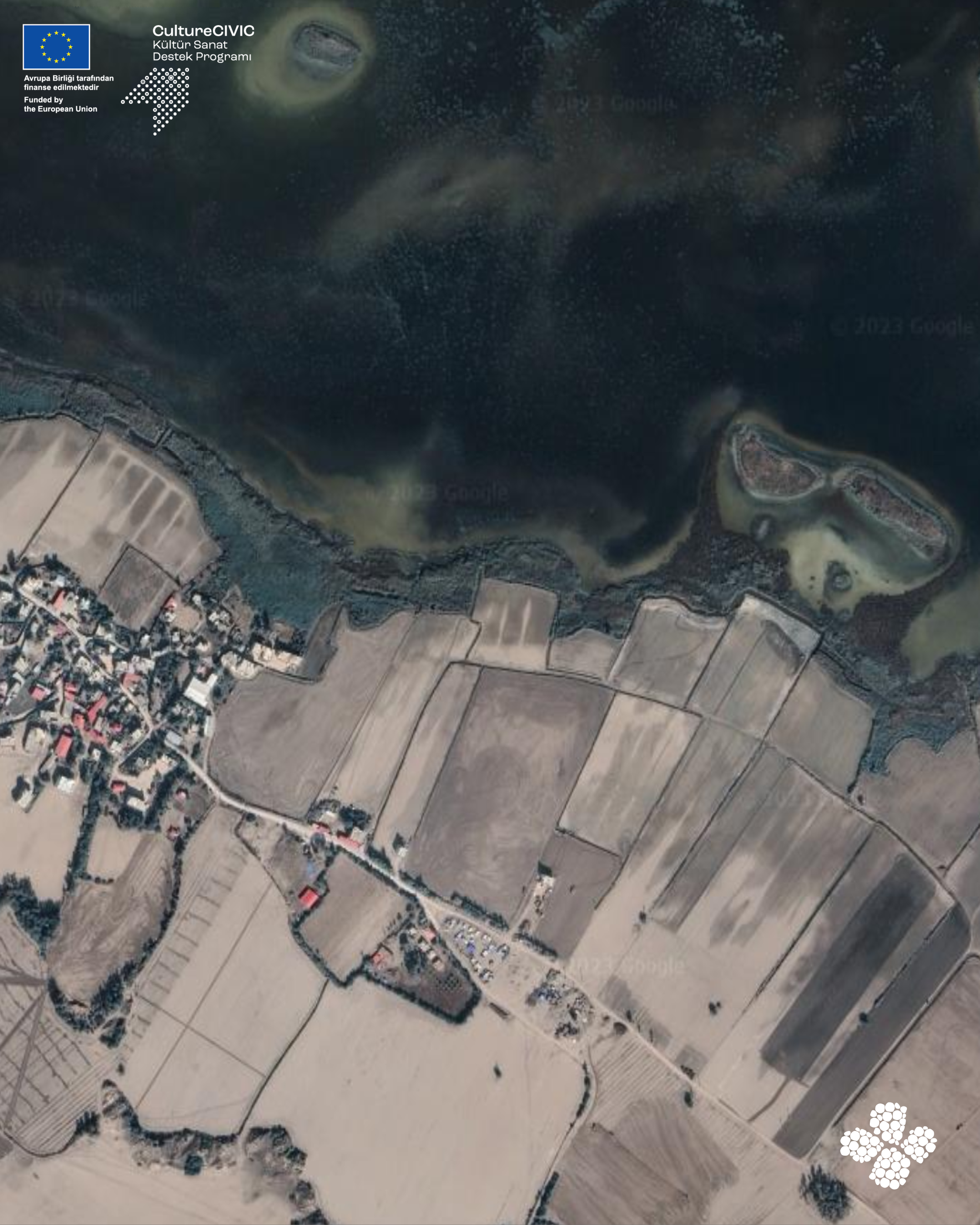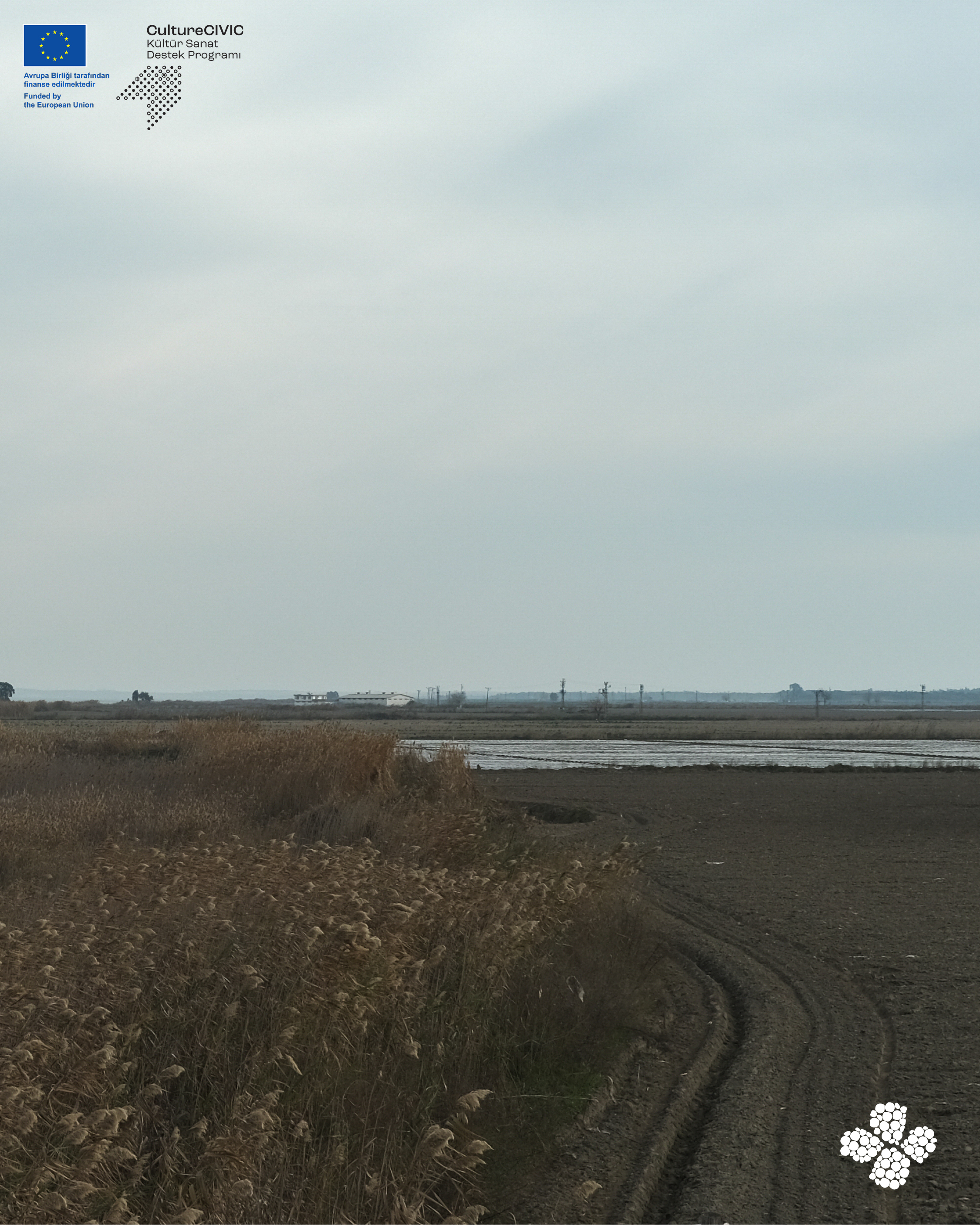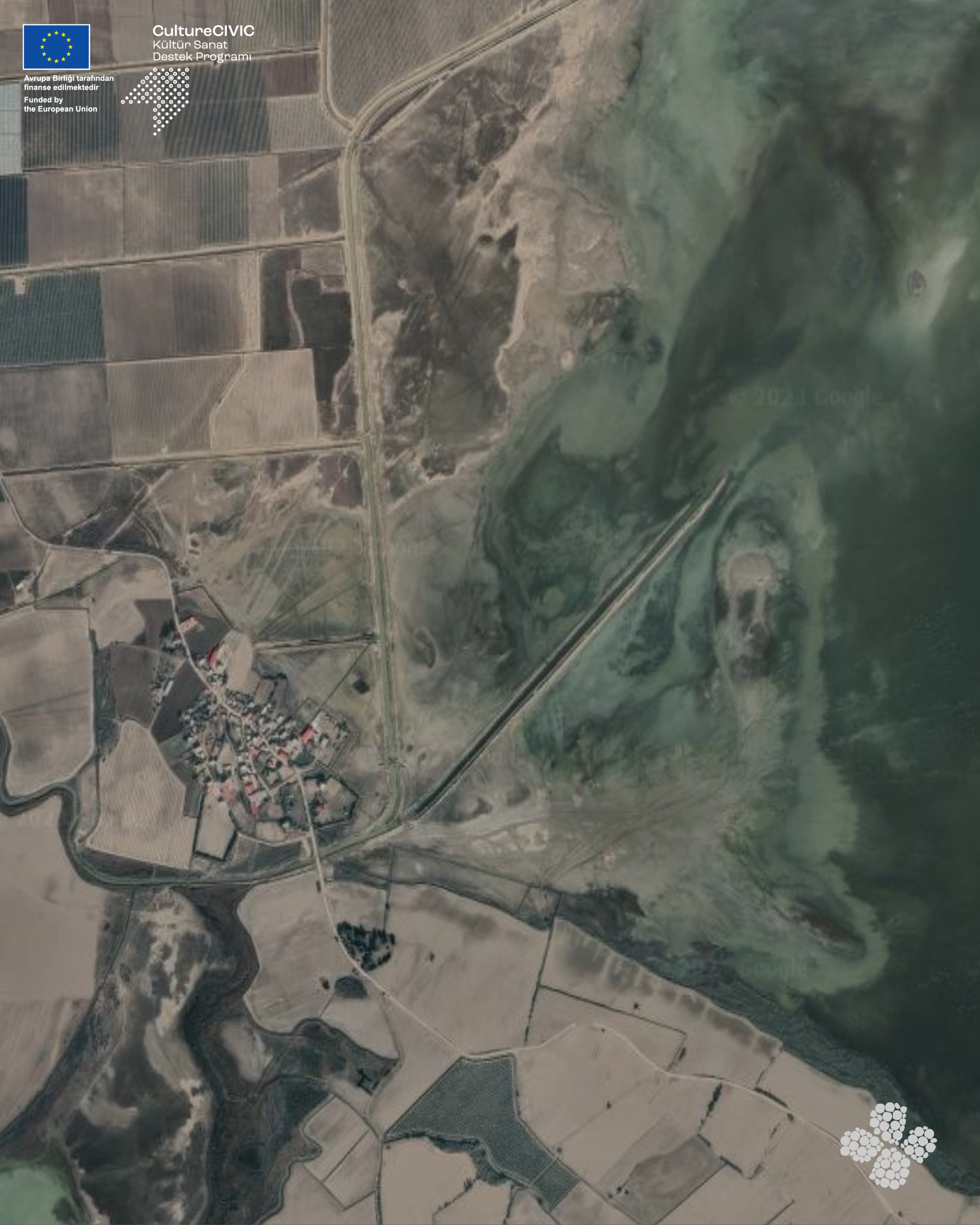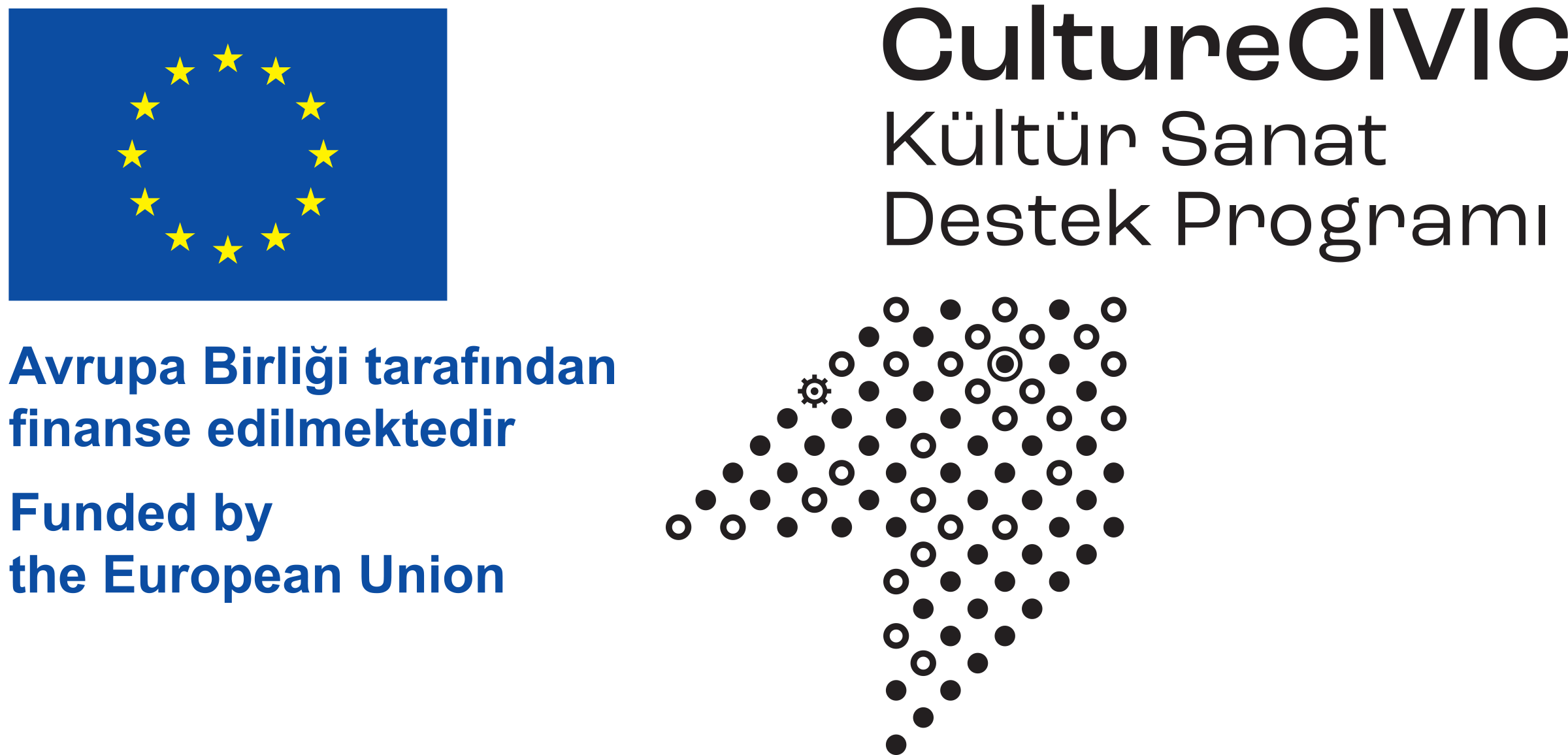Akyatan, Ağyatan ve Karataş Kumulları
Seyhan Deltası’nda Akyatan Lagünü’ne doğru
Akyatan, Ağyatan and Karataş Sand Dunes
Towards Akyatan Lagoon in the Seyhan Delta
27.01.2023
Akyatan Lagünü’ne doğru ilerledikçe yol kenarındaki arazilerde toprak gittikçe kumullaşıyor.
Rehberimiz ‘’tam fıstık ekmelik arazi’’ olarak tanımlıyor bu kumullaşan alanları. Öte yandan, biz Lagün’e ulaşmaya çalıştıkça tarım için kullanılan alanın zaman içerisinde genişleyerek kumullar üzerinde baskı kurduğunu araştıran Çukurova Üniversitesi’nde akademisyen Hakan Alphan’ın kumullar ve kumul peyzajının tehlike altındaki biyolojik çeşitliliği üzerine çalışmalarını hatırlıyoruz.
Çölleşme ve Erozyonla Mücadele Genel Müdürlüğü’nün Türkiye’de Kıyı Kumulları ve Kumul Tesbit Çalışmaları Raporu kumullara dair ilginç bir sürece rastlıyoruz. Rapor kumul erozyonunun önlenebilmesi adına geliştirilen proje kapsamında bölgede yapılan ağaçlandırmalardan bahsediyor. Adana Karataş Kumul Tespit Projesi 1982’de, Adana Akyatan Kumul Tespit Projesi 1972’de ve Adana Ağyatan Kumul Tespit Projesi 2014’te projelendirilmiş ve ağaçlandırma uygulamalarına başlanmış. Ramsar Sulak Alanı koruma arazisi içerisinde kalan Yumurtalık Lagünü bu projelendirmelerin dışında kalıyor. Bu projeler bir yandan gölün derinliğini kum taşınmasını engelleyerek korurken bir yandan da çevrede var olan bitkisel dokuyu değiştiriyor. Dikilen ağaçlar arasında Kıbrıs Akasyası (Acacia saligna) , Fıstık Çamı (Pinus pinea), Dağ Servisi (Cupressus sp), Akasya (Acacia), Kızılçam (Pinus brutia), Zakkum (Nerium oleander) ve Okaliptüs (Eucalyptus camaldulensis) bulunuyor.
Raporun Akyatan bölümünden bir alıntı: ‘’Kumul tesbit çalışmalarının tamamlanmasından sonra aradan geçen 30 yılda Kıbrıs Akasyası, Sahil Çamı ve Fıstık Çamı türleri çok sık ve girift hale gelmiş ve silvikültürel müdahaleye ihtiyaç duyulmaktadır. Ağaçlandırma yapılan alanda kumul hareketi tamamen durmuş, hatta her yıl önemli miktarda fıstık çamı kozalağı elde edilmektedir. Ayrıca ağaçlandırılan alanın gerisinde daha önce yapılması mümkün olmayan tarım yapılabilmektedir.’’
Rehberimiz ‘’tam fıstık ekmelik arazi’’ olarak tanımlıyor bu kumullaşan alanları. Öte yandan, biz Lagün’e ulaşmaya çalıştıkça tarım için kullanılan alanın zaman içerisinde genişleyerek kumullar üzerinde baskı kurduğunu araştıran Çukurova Üniversitesi’nde akademisyen Hakan Alphan’ın kumullar ve kumul peyzajının tehlike altındaki biyolojik çeşitliliği üzerine çalışmalarını hatırlıyoruz.
Çölleşme ve Erozyonla Mücadele Genel Müdürlüğü’nün Türkiye’de Kıyı Kumulları ve Kumul Tesbit Çalışmaları Raporu kumullara dair ilginç bir sürece rastlıyoruz. Rapor kumul erozyonunun önlenebilmesi adına geliştirilen proje kapsamında bölgede yapılan ağaçlandırmalardan bahsediyor. Adana Karataş Kumul Tespit Projesi 1982’de, Adana Akyatan Kumul Tespit Projesi 1972’de ve Adana Ağyatan Kumul Tespit Projesi 2014’te projelendirilmiş ve ağaçlandırma uygulamalarına başlanmış. Ramsar Sulak Alanı koruma arazisi içerisinde kalan Yumurtalık Lagünü bu projelendirmelerin dışında kalıyor. Bu projeler bir yandan gölün derinliğini kum taşınmasını engelleyerek korurken bir yandan da çevrede var olan bitkisel dokuyu değiştiriyor. Dikilen ağaçlar arasında Kıbrıs Akasyası (Acacia saligna) , Fıstık Çamı (Pinus pinea), Dağ Servisi (Cupressus sp), Akasya (Acacia), Kızılçam (Pinus brutia), Zakkum (Nerium oleander) ve Okaliptüs (Eucalyptus camaldulensis) bulunuyor.
Raporun Akyatan bölümünden bir alıntı: ‘’Kumul tesbit çalışmalarının tamamlanmasından sonra aradan geçen 30 yılda Kıbrıs Akasyası, Sahil Çamı ve Fıstık Çamı türleri çok sık ve girift hale gelmiş ve silvikültürel müdahaleye ihtiyaç duyulmaktadır. Ağaçlandırma yapılan alanda kumul hareketi tamamen durmuş, hatta her yıl önemli miktarda fıstık çamı kozalağı elde edilmektedir. Ayrıca ağaçlandırılan alanın gerisinde daha önce yapılması mümkün olmayan tarım yapılabilmektedir.’’
As we move towards Akyatan Lagoon, the land on the roadside becomes sand dunes.
Our guide describes these sand dunes as "the perfect land for planting peanuts". On the other hand, as we try to reach the Lagoon, we are reminded of the work of Hakan Alphan, an academic at Çukurova University, on the endangered biodiversity of dunes and dune landscapes. His works highlight how the area used for agriculture has expanded over time, putting pressure on the dunes
The Report on Coastal Dunes and Dune Identification Studies in Turkey by the General Directorate of Combating Desertification and Erosion Activities shares interesting processes about dunes. The report mentions afforestation in the region as part of a project to prevent dune erosion. The Adana Karataş Dune Identification Project was designed in 1982, the Adana Akyatan Dune Identification Project in 1972 and the Adana Agyatan Dune Identification Project in 2014, and afforestation practices were initiated. Yumurtalık Lagoon, which is protected by the Ramsar Convention of Wetlands, is excluded from these projects. While these projects protect the depth of the lake by preventing sand transport, they also change the existing vegetation in the surrounding area. Among the trees planted are Cyprus Acacia (Acacia saligna), Pistachio Pine (Pinus pinea), Mountain Cypress (Cupressus sp), Acacia (Acacia), Red Pine (Pinus brutia), Oleander (Nerium oleander) and Eucalyptus (Eucalyptus camaldulensis).
An excerpt from the Akyatan section of the report: "In the 30 years that have passed since the completion of the dune identification studies, Cyprus Acacia, Coastal Pine and Pistachio Pine species have become very dense and intricate and silvicultural intervention is needed. In the afforested area, dune movement has completely stopped and even a significant amount of pine cones are obtained every year. In addition, agriculture can be practiced behind the afforested area, which was not possible before.''
Our guide describes these sand dunes as "the perfect land for planting peanuts". On the other hand, as we try to reach the Lagoon, we are reminded of the work of Hakan Alphan, an academic at Çukurova University, on the endangered biodiversity of dunes and dune landscapes. His works highlight how the area used for agriculture has expanded over time, putting pressure on the dunes
The Report on Coastal Dunes and Dune Identification Studies in Turkey by the General Directorate of Combating Desertification and Erosion Activities shares interesting processes about dunes. The report mentions afforestation in the region as part of a project to prevent dune erosion. The Adana Karataş Dune Identification Project was designed in 1982, the Adana Akyatan Dune Identification Project in 1972 and the Adana Agyatan Dune Identification Project in 2014, and afforestation practices were initiated. Yumurtalık Lagoon, which is protected by the Ramsar Convention of Wetlands, is excluded from these projects. While these projects protect the depth of the lake by preventing sand transport, they also change the existing vegetation in the surrounding area. Among the trees planted are Cyprus Acacia (Acacia saligna), Pistachio Pine (Pinus pinea), Mountain Cypress (Cupressus sp), Acacia (Acacia), Red Pine (Pinus brutia), Oleander (Nerium oleander) and Eucalyptus (Eucalyptus camaldulensis).
An excerpt from the Akyatan section of the report: "In the 30 years that have passed since the completion of the dune identification studies, Cyprus Acacia, Coastal Pine and Pistachio Pine species have become very dense and intricate and silvicultural intervention is needed. In the afforested area, dune movement has completely stopped and even a significant amount of pine cones are obtained every year. In addition, agriculture can be practiced behind the afforested area, which was not possible before.''







Photos: Mahsul Projesi


